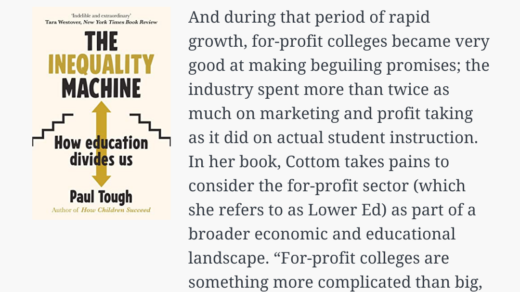Our starting point for systems thinking demands: What are the likely second-order effects? What will fill the void left by plastic bags, if they’re banned? Customers will either: (a) use more paper bags; (b) bring reusable bags; or (c) go without bags. Here’s where we reach our first surprise: While paper bags and reusable bags are far better than plastic ones from the perspective of keeping waterways clean, they are worse in other ways. They require far more energy to produce and ship than do plastic bags, which means they increase carbon emissions. A UK Environment Agency study calculated the “per use” effects of different bags on climate change and concluded that you’d need to use a paper bag 3 times and a cotton reusable bag 131 times to be on par with plastic bags. Not to mention that manufacturing paper and reusable bags causes more air and water pollution than plastic, and they are much harder to recycle. So now we’re forced to grapple with part/whole confusion: If protecting waterways and marine life, specifically, is our goal, then a plastic bag ban is a great idea. But if making the whole environment better is the goal, then it’s less clear. There are competing effects to consider. Another twist is that we’ve got to be very careful how we design the ban. In 2014, Chicago passed a law banning stores from offering thin, single-use plastic bags at checkout. So what did the stores do? They offered thicker plastic bags at checkout. The retailers’ supposed rationale was that customers could reuse these plastic bags, but of course most didn’t. That’s the cobra effect again: Trying to rid the environment of plastic led to more plastic. Experimentation leads to learning, which leads to better experiments. California voters passed a statewide ban in 2016, without the thicker-plastic loophole. One effect of the ban, though, was that sales of small and medium plastic trash bags shot up. (Presumably there were people who reused their grocery store plastic bags as trash bags at home—or for picking up dog poop—so in their absence they had to start buying alternatives.) A study by economist Rebecca Taylor found that 28.5% of the reduction in plastic caused by the ban had been nullified by this shift toward other bags. Still, that’s 28.5%, not 100%. The ban had significantly reduced single-use plastics. (And notice that in order to assess this issue at all, someone had to be carefully tracking the sales of substitute products, thus creating a source of feedback.) Then there were truly unanticipated consequences. Some people attributed a deadly 2017 hepatitis A outbreak in San Diego to the lack of plastic bags. Why? Homeless people had been in the habit of using the bags to dispose of their own waste. When the bags became less plentiful, the other alternatives turned out to be less sanitary. I wonder if you’re feeling now the way I was feeling when I first started trawling through this research: overwhelmed and dispirited, with a spritz of annoyance. What hope do we have of solving the hardest problems facing us when even plastic bag policies create a blizzard of complexity? It was Donella Meadows’s quote—about the need “not to bluff and not to freeze but to learn”—that pulled me out of my wallow. Because her point is: It’s hard, but we’re learning. As a society, we’re learning. Think of all the ingredients required even to analyze a policy like the plastic bag ban: the computer systems, the data collection, the network infrastructure, not to mention the ecosystem of smart people who know how to structure experiments that can shed light on city- and state-wide policies. This infrastructure of evidence has existed for a mere blip in human history. When it comes to upstream thinking, we’re just starting to get in the game. In 2016, Chicago scrapped the plastic bag ban that had led to the cobra effect. The city council replaced it with a 7-cent tax on all paper and plastic checkout bags that started in early 2017. And you know what? It’s working pretty well. A research team led by economist Tatiana Homonoff collected data from several large grocery stores. Before the tax, about 8 out of 10 customers used a paper or plastic bag. After the tax, that dropped to roughly 5 out of 10. What did the other 3 people do? Half the time they brought their own bag and half the time they carried out their purchases without a bag. And for those 5 customers who kept using bags, ka-ching, their voluntary tax payments provided the city with extra money to serve citizens.
2nd order effects is one of the key reasons why I always have trust issues with brands that market themselves as “sustainable” or so. The economic system is complex and it is really difficult to determine on an aggregate basis whether making a change in materials can really lead to overall environmental benefits.
It also depends on which environmental goal you are optimizing for. I remember reading that a metal straw could take up to 1000 times the carbon footprint of a plastic straw. Thus, if you wanted to optimize for ocean plastic pollution, banning plastic straws might help. On the other hand, it would make more sense to use plastic straws over metal straws for carbon footprint unless you are sure you can use the metal straw over a 1000 times.
The simplest way of course is to reduce overall consumption. I always found that there is an inherent contradiction between brands that promote greater consumption while touting environmentally sustainable products. Of course, it is impossible to know but I think this passage really brings about how it is important to have rigorous analysis and studies rather than taking claims or “common sense” on a superficial level.



